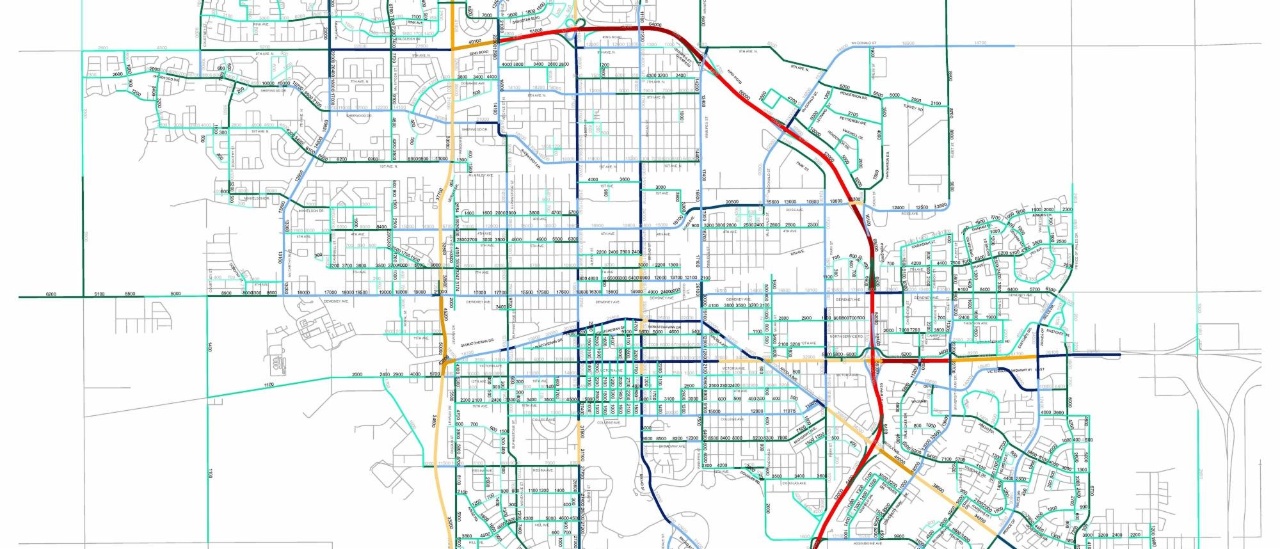School & Playground Zones
School zones are maximum 30 km/h as indicated by signage. The speed limit is in effect from 7 a.m. to 7 p.m. seven days a week, year-round.
- Drivers will know they are entering a zone when they see a School Zone sign. The end of a school zone is identified with a bright yellow School Zone End sign.
- Drivers can return to 50 km/hr once they have exited the zone.
- Speed is enforced by Regina Police Service.
Playground zones are maximum 30 km/hr or as indicated by signage.
Refer to the Traffic Bylaw for information. Speed is enforced by Regina Police Service.
Yellow school buses are equipped with a stop arm/signal or a flashing safety light. However according to the Traffic Bylaw, bus drivers cannot use them within City limits for the following reasons:
- Allowing children to jaywalk from behind a bus contradicts what students are learning about traffic safety (i.e. to cross at the corner and not to cross the street from between parked cars).
- Children may rely on stop arms instead of other measures to cross the street, like school patrols, half signals, pedestrian corridors, and painted crosswalks.
- Children may develop false confidence that all drivers will stop when the stop arm is activated; however, some drivers may not stop when the arm is down.
- Drivers may not see the stop arm/signal or flashing light in a busy and chaotic urban setting (unlike a rural setting where there are less distractions and vehicles.)
When dropping off your children, take the extra time to drop them off on the sidewalk nearest their school so they don’t have to cross the street. If that’s not possible, you should drop your children off near an intersection so they can cross safely at a location where motorists expect pedestrians to cross.
Community Safety Zones
Community Safety Zones are a maximum of 40 km/hr as indicated by signage. They are part of the Vision Zero Framework.
The Cathedral Neighbourhood Community Safety Zone will begin enforcement on August 12, 2024.
- Drivers will know they are entering the zone when they see a Community Safety Zone sign.
- The Cathedral Neighbourhood Community Safety Zone is within the area South of Saskatchewan Drive, East of Pasqua Street, North of Wascana Creek and West of Albert Street. However, this area does not include Saskatchewan Drive, Pasqua Street or Albert Street. See the map for details.
- Drivers can return to 50 km/hr once they have exited the zone.
- School Zones will remain at 30 km/hr, even within the Community Safety Zone. School Zones are indicated by signage.
- Speed is enforced by Regina Police Service.
Lights & Signals
The City of Regina monitors and analyzes traffic patterns at intersections before recommending whether or not a traffic signal should be installed. If you notice traffic light issues, contact Service Regina at 306-777-7000.
Specialized Traffic Signals - Green Turning Arrows
Green turning arrows are installed at qualified intersections. Generally this includes where there is a large number of vehicles making left-hand turns during rush-hour, or when approaching traffic is so heavy that vehicles cannot make the left-hand turn in two or three cycles during peak hours. There are some intersections where safety can be increased by adding green turn arrows. These intersections are analyzed to determine if it’s warranted.
To make a recommendation for a green turning arrow, note the location of the intersection, time of day you believe a green turning arrow would benefit and in what direction (northbound, southbound, eastbound, westbound). Provide this information using the City's online contact us form.
The goal of the Red Light Safety Program is to change driver’s behaviour, improve pedestrian safety and reduce collisions at high-risk intersections by issuing tickets for running a red light and warning notices for rolling right turns on red violations.
We use digital imaging to monitor these locations. The cameras capture images of the violation and the vehicle’s license plate. Cameras are located at:
- Albert Street and Saskatchewan Drive
- Albert Street and Parliament Avenue
- Lewvan Drive and Dewdney Avenue
Registered vehicle owners are ticketed $230 or issued a warning notice, depending on the red light violation. Tickets are issued for drivers who run a red light, while warning notices are given for drivers who fail to stop at a red light before turning right. Tickets and warning notices are issued in the same manner as the photo enforcement tickets, through Regina Police Service. A late charge of $60 is added to the fine if it is not paid within 60 days. The Driver’s License of the registered vehicle owner cannot be renewed until the fine and late payment charges have been paid.
The revenue from the Red Light Safety Program will be used to offset costs associated with running the program and the remainder will go to general revenue.
Pay your red light ticket online
SaskPower, the City of Regina and the Ministry of Highways and Infrastructure own and maintain different street lights throughout the City.
The majority of street lights within Regina are owned and maintained by SaskPower and considered residential street lighting. Residential lighting includes street lights in neighbourhoods, in the downtown and lighting along major roadways such as Albert Street, Broad Street, Winnipeg Street, College Avenue, Pasqua Street, Dewdney Avenue, etc.
Expressway lights are located on high-speed arterial roadways like Ring Road, Highway #1 Bypass, Lewvan Drive, or Arcola Avenue. The City of Regina owns and maintains about 800 of these expressway lights while the Ministry of Highways & Infrastructure owns and maintains the remainder. While the City is responsible for the maintenance of these expressway lights, outages can be reported to SaskPower.
Outages: Report street light outages on the SaskPower website or by calling 1-888-757-6937.
Accessible Pedestrian Signals (APS), inform pedestrians who are blind or visually impaired when they have the right-of-way to cross at a signalized intersection.
Accessible Pedestrian Signals use two audible tones with the visual pedestrian signals to designate the direction of the pedestrian right-of-way. For the north/south right-of-way, the ‘cuckoo’ audible tone is sounded, and for the east/west right-of-way, the ‘chirp’ audible tone is sounded.
The APS units are also equipped with vibro-tactile features for pedestrians who are deaf or hard of hearing. Raised arrows on the APS indicate the crossing direction of the unit, which then vibrates in combination with the audible tone to indicate right-of-way for that crossing.
APS also use a ‘locator tone’ to assist pedestrians in locating the pushbutton. This tone currently varies between units as either a ‘beeping’ or a ‘ticking’ sounds.
The City of Regina has 69 intersections equipped with APS. As part of its vision to be an inclusive and accessible community, the City is committed to retrofitting six signalized intersections with APS each year. Any newly signalized intersections with pedestrian access are automatically installed with APS.
To request a location for APS installation, please contact Service Regina at 306 777-7000 or use our online request form. Requested locations are prioritized using criteria, such as intersection configuration and safety, pedestrian and vehicle volumes, and proximity to public transit and various pedestrian destinations.
Regina has 17 Touchless Accessible Pedestrian crosswalks in our community. The touchless signals allow users to activate the pedestrian crossing signals without the need to physically touch a button. They also emit an audible sound to help individuals with visual impairments to cross intersections safely. Users can continue to press the button like a traditional pedestrian signal if they choose.
When a user wishes to cross the street, they simply need to wave their hand one to four inches away from the touchless pushbutton area to activate the signal. A radar sensor within the unit alerts the traffic controller unit that a pedestrian is ready to cross. If a user has a visual impairment, they will hear the audible tone advising when it is safe to cross the street.
To request a location for touchless or APS installation, please contact Service Regina at 306 777-7000 or use our online request form. Requested locations are prioritized using criteria, such as intersection configuration and safety, pedestrian and vehicle volumes, and proximity to public transit and various pedestrian destinations.
Many signalized intersections have a button you may push to activate the WALK/DON’T WALK pedestrian signal.
- If the button is pushed, the WALK signal could stay on longer to allow you the extra time to cross the street.
- If the button is not pushed, more ‘green’ time could be given to motorists. This allows more traffic to travel through the intersection and reduces congestion. If you are at a signalized intersection with a pedestrian push button, you must use it or you will not get a WALK signal allowing you to cross.
For some intersections that have heavy pedestrian volume, pedestrian phase could be provided every phase during off peak hours.
Understanding Pedestrian Signals
Pedestrian signals tell you when it is safe to cross:
- A "WALK" or “WALKING SYMBOL” means you may begin crossing.
- A flashing "DON'T WALK" or flashing “HAND SYMBOL” serves as a warning that it is to late to begin to cross the street. However, if you entered the cross walk before the signal began to flash, you should have enough time to cross the street.
- A solid "DON'T WALK" or solid ‘HAND SYMBOL” indicates that it is unsafe to cross the street. You should wait until the WALK signal appears again before crossing the street.
Signs
Construction and detour signs are posted to warn you that road work is being done in the area.
You must obey the speed limits posted on the signs, as these limits ensure the safety of workers and other motorists. Even if you cannot see any activity in a construction zone, you should reduce your speed to the posted limit because other hazards – like gravel chips and uneven pavement – may be present and cause damage to your vehicle if you are travelling at high speeds.
You should also leave plenty of space between road crews/equipment and your vehicle when going through a construction zone and obey all directions by flag people.
Children at Play signs are not part of the Canadian Manual of Uniform Traffic Control Devices, and therefore, are not used by the City of Regina. If you can buy it, its not legal.
These signs are not recommended for municipalities because:
- studies show these signs have no effect on motorists to control speeding
- motorists need to watch for children playing near every residential street, and not just the street where the sign is located
- these types of signs suggest to children that it’s okay to play on the street, which is not the case
The City of Regina only posts warning signs when motorists need to be advised of unusual or unexpected conditions.
Learn more about no parking and no stopping zones.
No Parking: Vehicles can only stop briefly to drop someone off or pick someone up in this zone. You may not park your vehicle and wait for someone.
No Stopping: Vehicles must not stop here for any reason, including dropping off or picking up passengers. You may only stop here to obey traffic signals or signs, for emergency personnel, traffic flow, or due to an emergency.
You must remain behind the wheel of your vehicle as it is illegal to stay parked for any length of time. Additionally, your vehicle must be moved immediately should traffic conditions warrant or if you are directed to do so by parking enforcement personnel.
As well, you cannot park your vehicle:
- within 10m of an intersection with a painted crosswalk
- on the continuous side between the painted crosswalks at a “T” intersection
- within 2m of a fire hydrant
- in an alley unless the vehicle is being actively loaded or unloaded and is not blocking traffic
- within 3m of an alley that intersects with a street
- within 2m of any private driveway
- more than 0.6m away from the curb
Stop signs, 2-way stops, 3-way stops, and 4-way stops assign the right-of-way at that intersection and help to control traffic at busy intersections.
Some people feel that installing a stop sign or all-way stop on their street will reduce speeding, however, this is not usually the case. Studies have shown that stop signs are ineffective at controlling speed along a street. Most motorists will speed up after they stop, and in many cases, actually drive faster to make up for the delay.
Stop Signs: A stop sign may create more hazards if installed in the wrong place. As stated above, it may actually increase speeding. As well, motorists may ignore the stop sign if the intersection is always empty, thus becoming a danger to pedestrians and other motorists.
All-way Stops: The City of Regina uses a warrant standard developed by the Transportation Association of Canada to determine if an intersection should receive an all-way stop (e.g., 2-way, 3-way, 4-way). This standard considers the traffic volumes on the streets, the number of right-angle collisions, and speed limits.
All-way stops are only installed at locations where two major streets intersect and traffic volumes on each street are about equal. If traffic volumes were not equal, the all-way stop would create unnecessary delays to the major flow of traffic.
If you feel your intersection should be evaluated for an all-way stops warrant, use the City’s online contact us form to request one.
Traffic
The City of Regina constantly studies traffic flow, volumes and speeds to ensure the most efficient and safe movement of motorists and pedestrians in Regina.
Speed limits are determined based on provincial legislation and/or established North American traffic engineering procedures. If a situation warrants it, the City of Regina can monitor and investigate traffic volumes and speeds to determine if changes should be made.
The Traffic Bylaw identifies the speed limits for all roads in our community. These speed limits are determined based on dry pavement conditions.
- Within city limits, the default speed limit on all roads is 50 km/h unless otherwise posted.
- School zones are maximum 30 km/h as indicated by signage.
- Playground zones are maximum 30 km/hr or as indicated by signage. Refer to the Traffic Bylaw for information. Speed is enforced by Regina Police Service.
- Alleys are maximum 30 km/h.
- Construction zones with temporary speed reductions for safety must also be observed.
- All motorists are expected to reduce their speed in adverse weather conditions.
The authority to change the legal speed limit on Regina roads rests with City Council, however, Administration makes recommendations on appropriate speed limits.
Determining Speed Limits
Calculating a recommended speed limit for a particular street is influenced by:
- roadway geometry
- adjacent land use
- traffic volumes
- accident history
- established North American traffic engineering procedures
In North America, the procedure to establish an appropriate speed limit is based on the “85th percentile speed” principle. This means the speed limit will be set as near as practical to the speed at which 85% of vehicles are travelling along that road. Experience across North America has shown that 85% of drivers will operate their vehicle at a speed that is reasonable and prudent.
Requests to Lower or Increase Speed Limits
You may think lowering the posted speed limit will discourage speeding along your street. However, this is normally not the case. Research has shown that drivers will drive at a speed which they are comfortable with, regardless of the posted speed limit. In fact, unrealistically low speed limits can invite violation by responsible drivers and create new problems in our neighbourhoods:
- Artificially low speed limits increase the difference between the fastest and slowest drivers which has been proven to reduce safety.
- Artificially low speed limits lead to shortcutting on nearby streets.
Increasing speed limits may also not be feasible depending on roadway geometry, adjacent land use, or previous accident history for that street.
Use the City’s online contact us form if you wish to request a review of the speed limit on a certain street. Record the number assigned to your request if you wish to monitor the status of your request online or by phoning 306-777-7000.
Each year, the City of Regina collects traffic data at hundreds of locations. This information is used to determine the need for traffic signals, all-way stops, pedestrian protection and traffic calming.
The Annual Traffic Flow Map shows the average number of motorists travelling on major Regina roads in one 24-hour period. Traffic flow volumes listed are the total of vehicles travelling in both directions.
Since Regina is so large, the city is divided into different counting areas which are systematically counted over a set period. The City of Regina does not normally count roads and residential streets with traffic volumes under 1000 vehicles a day.
Traffic calming refers to techniques that are available to lessen the number of vehicles or reduce the speed of vehicles travelling in a residential neighbourhood.
The City of Regina follows very specific guidelines to determine which roads and streets are approved for traffic calming techniques.
Traffic Calming Techniques
There are four traffic calming techniques used in our community:
- Vertical deflectors: Vertical deflectors are devices like speed humps, rumble strips and raised intersections/ crosswalks. If you speed over a vertical deflector, you will experience an unpleasant jolt and possibly damage your vehicle. Drivers did not see the vertical deflector or choose to ignore it may lose control of their vehicle and causing more damages to the properties and people adjacent. They are also increasing the response time of emergency vehicles, and damaging snow removal equipment. Therefore, the City will not consider installing any new vertical deflectors.
- Horizontal deflectors: Horizontal deflectors are devices like chicanes, traffic circles, median islands and curb extensions or chokers. Horizontal deflectors reduce both speed and traffic volumes by making a route more difficult to drive at a high speed and make it more time-consuming (when compared to alternate routes.)
- Obstructions: Obstructions are devices like traffic diverters, intersection restrictions, directional closures, and full closures. These devices control traffic volumes, restrict traffic movements, and reduce short-cutting by prohibiting certain movements or restricting access altogether by motorists.
- Speed feedback signs: Speed feedback signs are used as a traffic calming device to slow vehicles down by making drivers aware when they are driving at speeds above the posted speed limits.
Request Traffic Calming
Use our online contact us form to request your street be reviewed for traffic calming. Record the number assigned to your request if you wish to monitor the status by phoning 306-777-7000.
Once received, your request will go through a two-step process:
1. Investigation
- verify the reported problem
- determine if traffic calming will resolve the problem
- submit the request to emergency service providers to review to ensure the proposed calming will NOT impact response times
- determine if funds are available to implement the traffic calming measures
2. Implementation
- hosting an open house about the proposed traffic calming project
- conducting a public survey where two thirds of returned surveys must be in favour of the project
The traffic calming project can only proceed if it receives positive responses in Step 1 and 2.
If your traffic calming request is denied:
Most speeding on residential streets is done by motorists who live in that area. To encourage everyone to drive the speed limit, you can:
- encourage your neighbours and visitors to drive the speed limit when travelling down your street
- write an article for your community association newsletter
- set an example by obeying the rules of the road and posted speed limits when you drive




